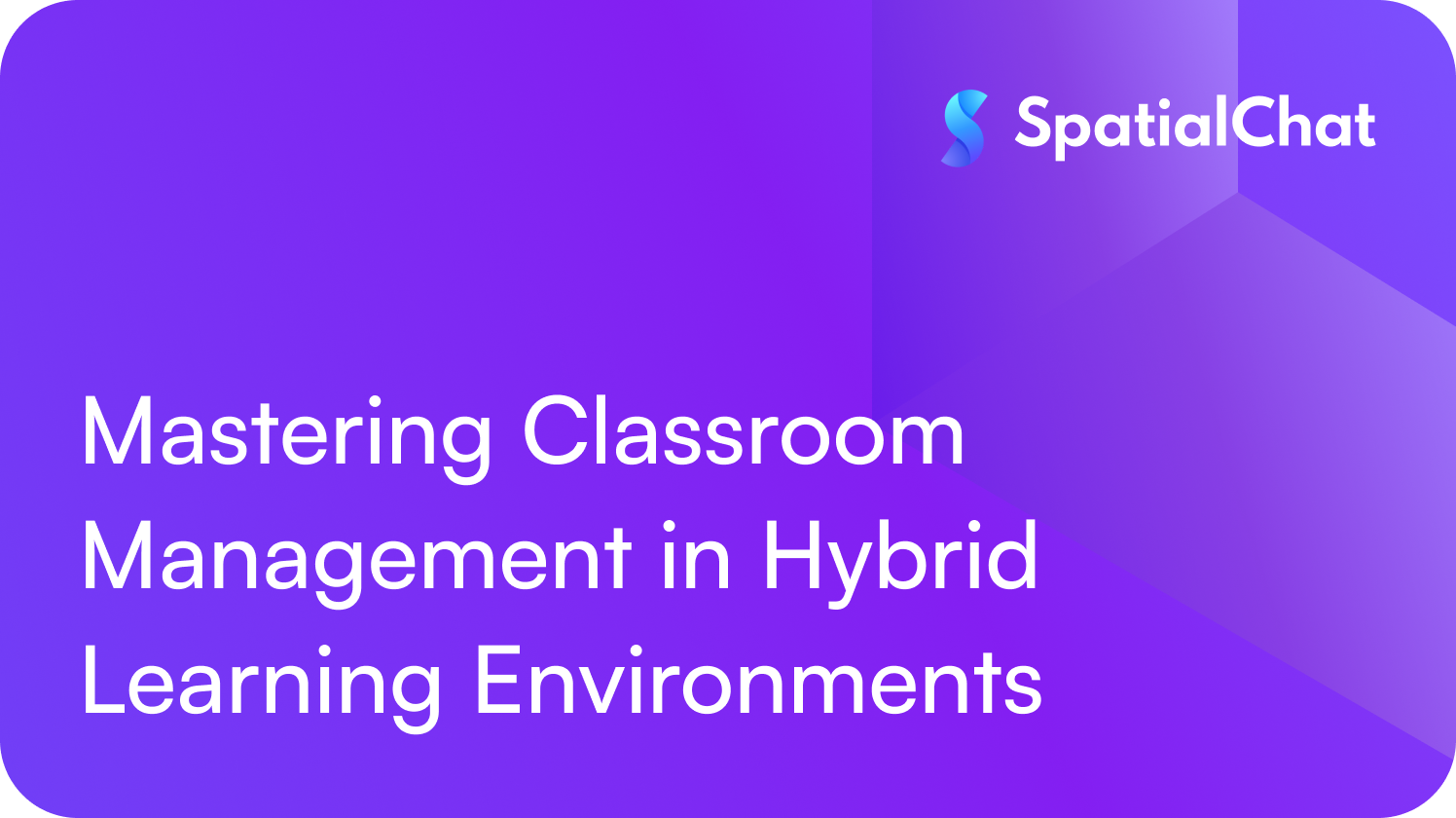Hybrid learning merges the best—and sometimes the most challenging—aspects of both in-person and remote education. While most educators today are experienced with managing traditional or online classrooms, hybrid instruction presents a unique balancing act. Teaching students in the room while simultaneously supporting those online requires creativity, adaptability, and a fresh approach to classroom management.
The key challenge? Ensuring that all students—regardless of where they’re learning from—feel equally involved, supported, and seen. To manage a hybrid classroom effectively, educators must remain flexible, empathetic, and intentional in their planning and delivery.
Let’s explore some essential strategies for managing a hybrid classroom equitably and effectively.
Key Considerations for Hybrid Classrooms
1. Equitable Technology Access
In a traditional classroom, handing out a paper quiz is straightforward. But for remote learners, accessing and submitting the same quiz should be just as seamless. The digital tools you use must ensure that students—whether at home or in class—can interact with materials, submit work, and participate without friction.
From video conferencing platforms to shared documents and learning management systems, your tech stack should make every student feel equally included, visible, and heard.
2. Balanced Attention and Relationship Building
In-person students naturally receive more attention—but in a hybrid classroom, your focus needs to extend beyond the physical walls. Build relationships with your remote students just as intentionally as you do with those onsite. Provide opportunities for one-on-one check-ins, create private digital spaces for questions, and encourage peer-to-peer connection across both groups.
3. Inclusive Communication and Participation
Traditional classroom cues—like raised hands or spontaneous discussions—don’t always translate well online. Modify these interactions so that remote students can contribute just as easily.
Start by crafting a system that ensures equal participation. Consider rotating who speaks, integrating chat responses into discussions, or using digital polling tools. Design your instruction so that it lives equally in your physical and virtual environments, keeping all students included and motivated to participate.
5 Proven Practices for Creating an Engaging Hybrid Classroom
Creating a successful hybrid classroom is all about finding the right balance—between pacing and progress, structure and spontaneity, engagement and accessibility. Here are five practical tips to help you maintain an inclusive and dynamic hybrid learning experience:
1. Slow Down the Pace
Going a little slower can go a long way. When you take your time with lesson delivery, students—especially those learning remotely—are more likely to stay engaged and absorb the material.
Remote learners often face tech-related delays or unfamiliar platforms that may impact how quickly they process information. A more measured pace supports these learners and also benefits students with sensory processing differences or other learning needs. Instead of spending time re-explaining concepts, you’re building a more thoughtful, accessible classroom for everyone.
2. Use Multiple Channels for Communication
Classroom discussions are often dominated by the most outgoing students—but in a hybrid setup, it’s important to hear from everyone.
Incorporating tools like Zoom or similar video platforms allows you to give quieter students alternative ways to participate—such as contributing through the chat or emoji reactions. Encourage digital communication just as much as verbal, and reward engagement across all formats. This helps ensure every student, regardless of learning style or comfort level, can take part in the conversation.
3. Establish a Consistent Routine
While spontaneity has its charm, it can add unnecessary complexity to a hybrid environment. Instead, plan your lessons and daily structure in advance and share them with students ahead of time.
When everyone knows what to expect—whether they’re learning in person or online—it helps the day run more smoothly and minimizes confusion. Predictability offers comfort, especially in mixed learning formats, and gives students the structure they need to succeed.
4. Ask for Support
You don’t have to do it all alone. Teaching in a hybrid setting can be overwhelming, but support staff can help lighten the load. Teaching assistants (TAs) or tech aides can handle everything from managing mute buttons and breakout rooms to offering individualized support for students who need extra help.
Whether they’re in-person, remote, or both, having dedicated assistants allows you to focus on teaching while ensuring all students receive the attention they need.
5. Keep It Fun and Interactive
Engagement is a constant challenge in any classroom—but even more so in hybrid environments. That’s why it’s crucial to incorporate elements of fun, movement, and interaction into your teaching strategy.
Use a microphone to involve in-person students in discussions more equitably, include multimedia in your lessons, encourage group collaboration, and try gamifying activities whenever possible. These approaches help sustain attention and make learning enjoyable for students, no matter where they’re logging in from.
Final Thoughts: Effective Classroom Management in Hybrid Learning
You don’t need to reinvent your teaching methods to thrive in a hybrid classroom—you just need to adapt. With a blend of structure, flexibility, and the right tools and support, hybrid learning can be just as effective and engaging as any other format. Start small, plan intentionally, and remember: when students feel seen, supported, and involved, learning becomes a shared success—no matter the setting.
Connect with us to see how SpatialChat can help you create more inclusive and manageable learning experiences.
